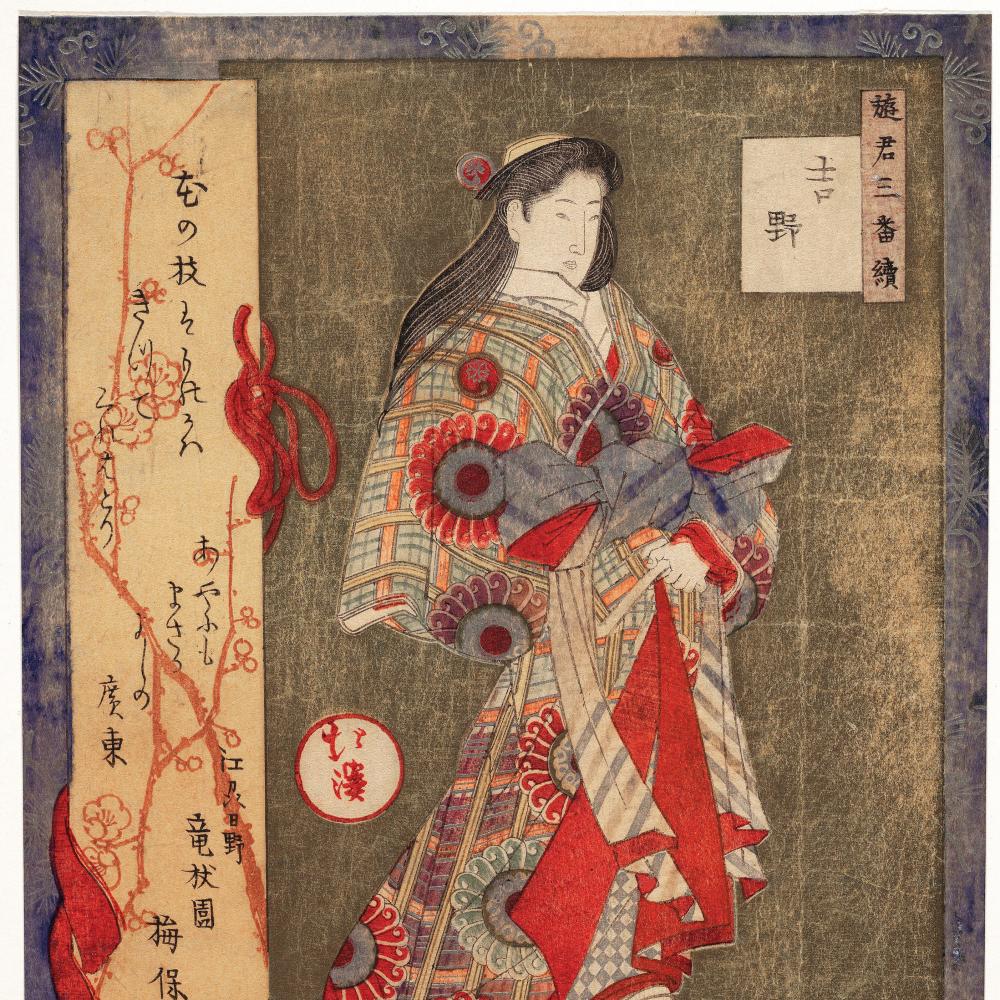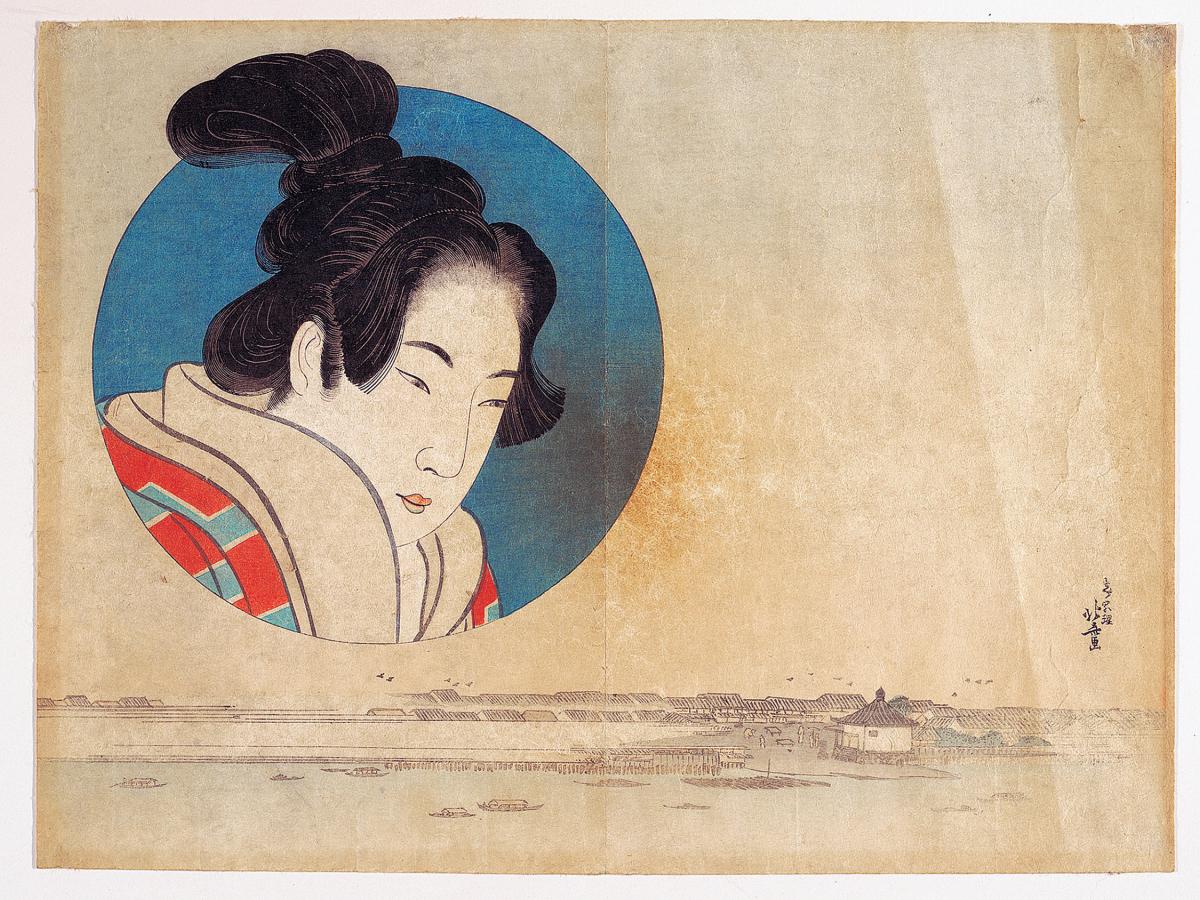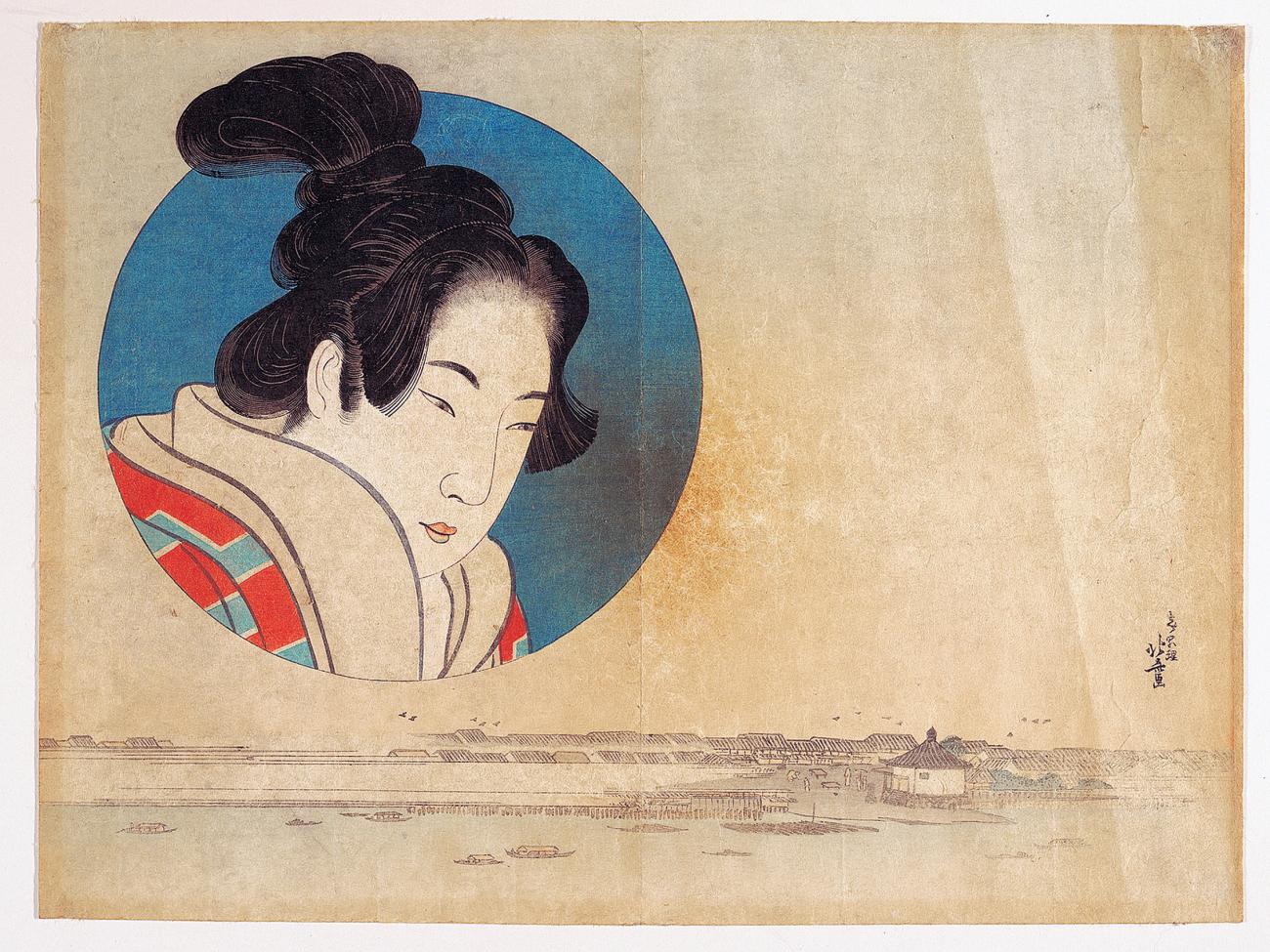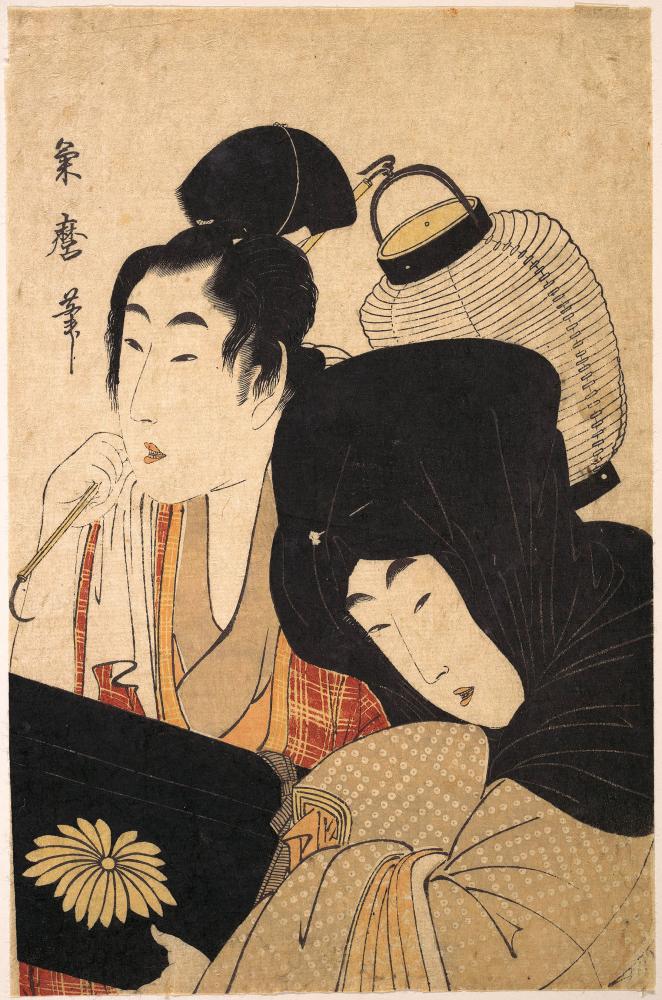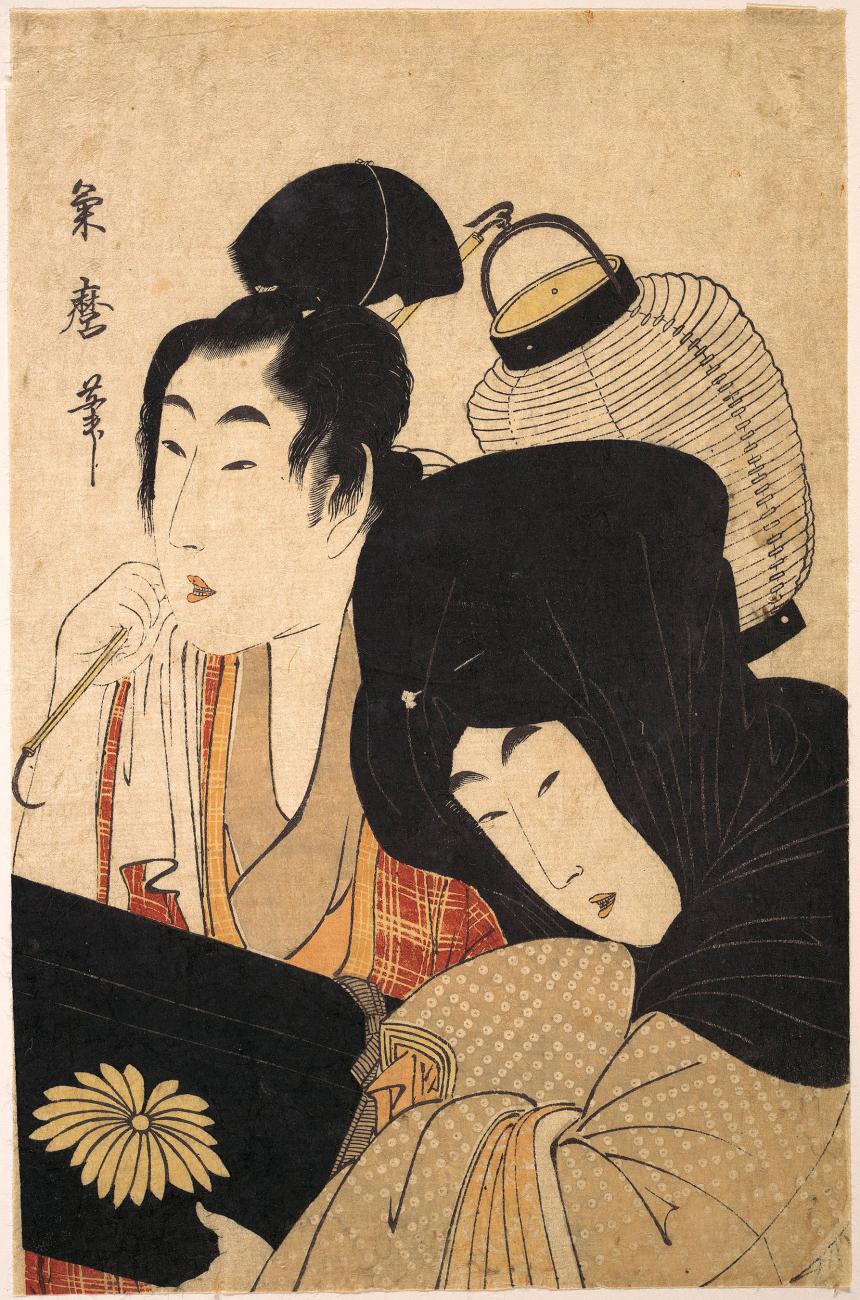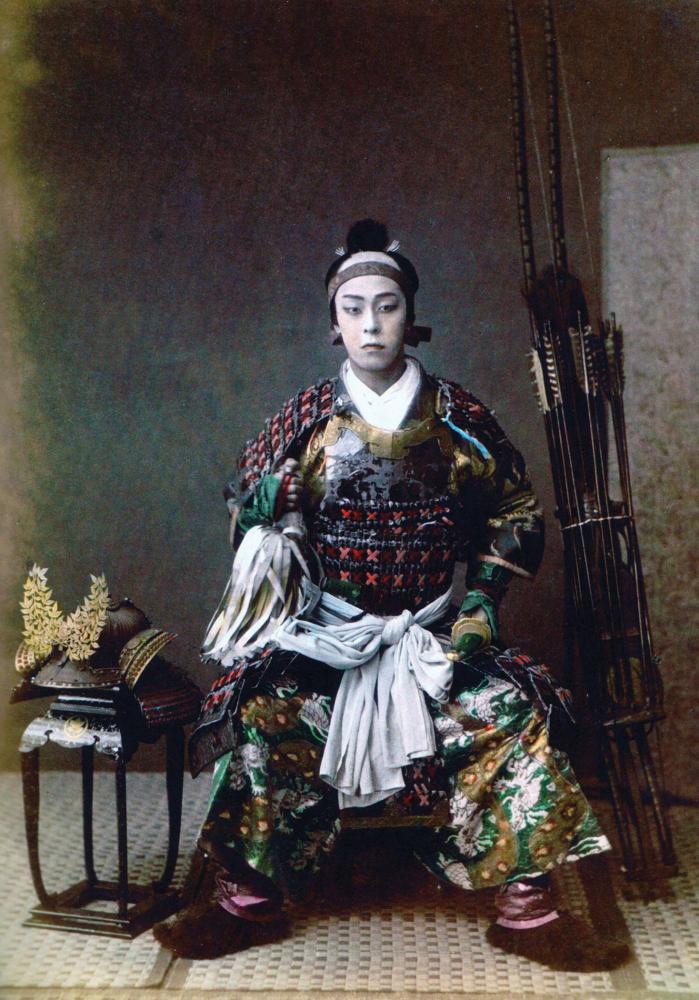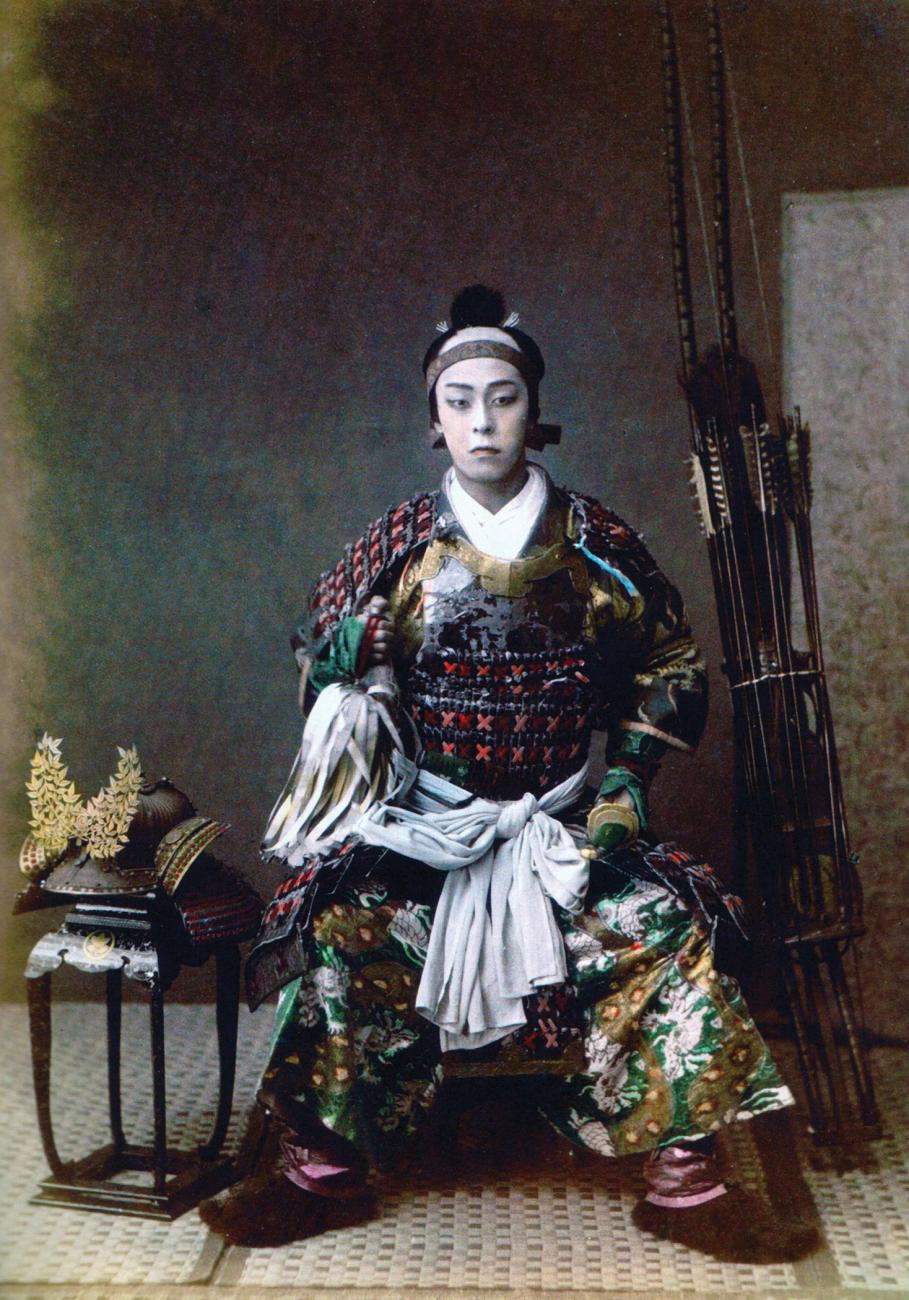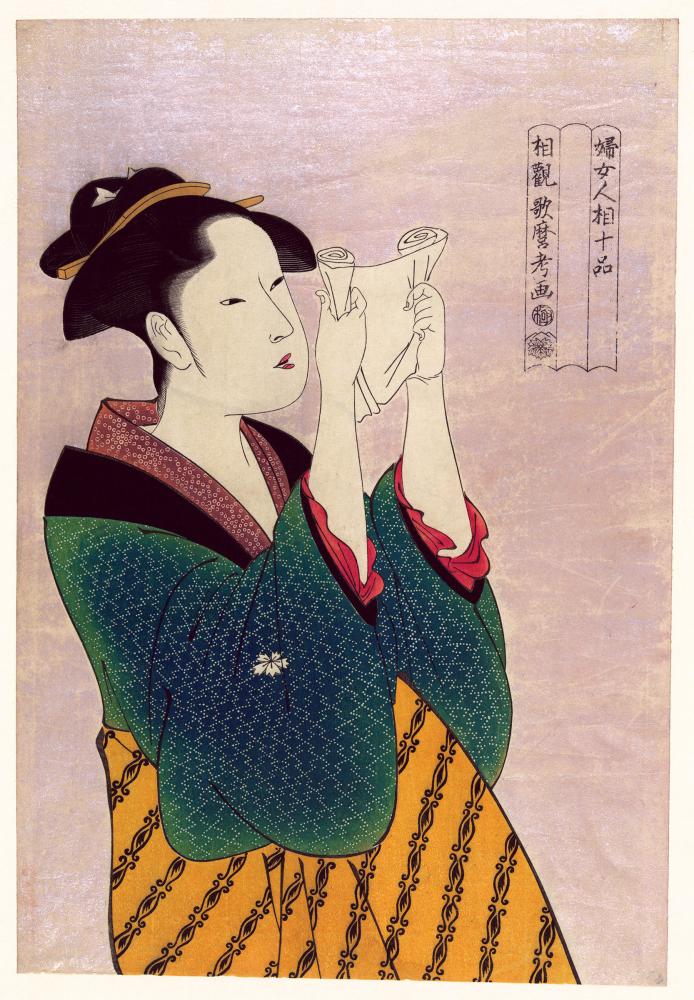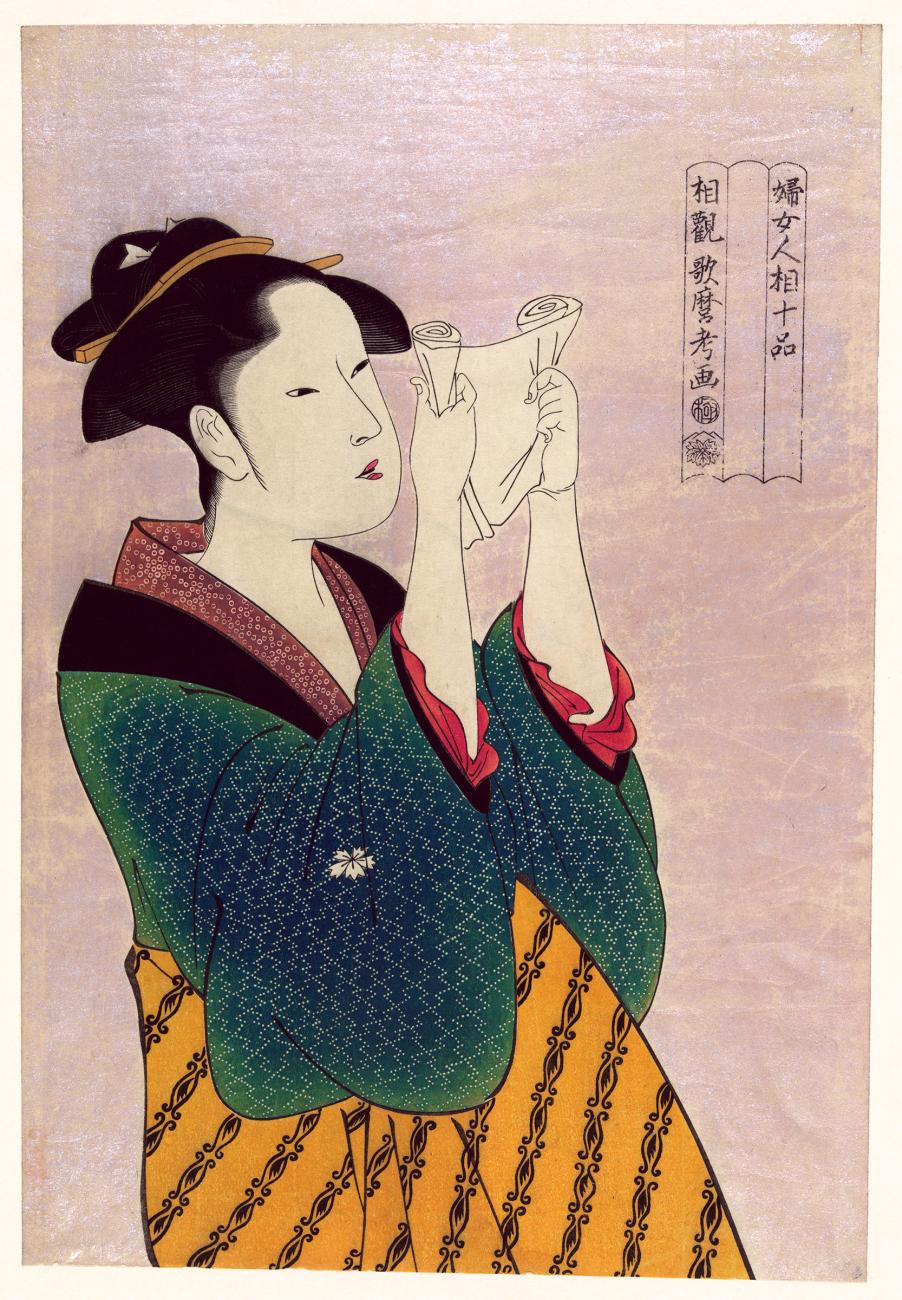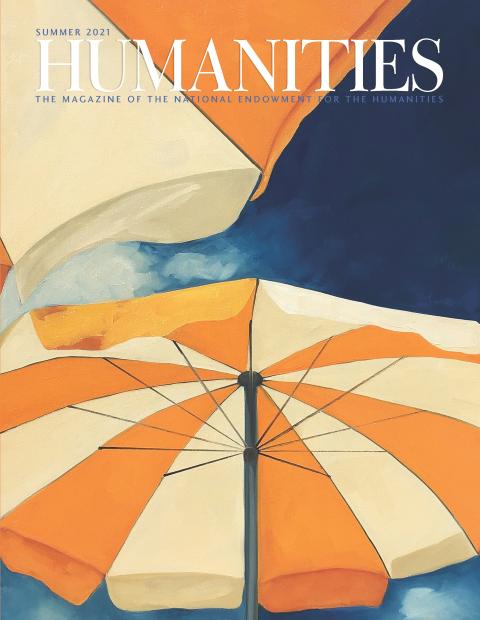Amy Stanley is a professor of history at Northwestern University and the author of two books, Selling Women: Prostitution, Markets, and the Household in Early Modern Japan and Stranger in the Shogun’s City: A Japanese Woman and Her World, which won the PEN/Jacqueline Bograd Weld Award for Biography and the National Book Critics Circle Award. It was also recently named a finalist for the 2021 Pulitzer Prize in Biography. Stanley’s research for Stranger in the Shogun’s City was supported by an NEH Fellowship in 2015, and, in 2019, a Fellowship for Advanced Social Science Research on Japan, awarded through a joint program of NEH and the Japan-U.S. Friendship Commission.
HUMANITIES: In Stranger in the Shogun’s City you have written an extraordinary history of a single not-famous individual. Her name is Tsuneno. Who is she and how did you find her?
AMY STANLEY: Tsuneno was an ordinary woman who was born into a Buddhist priest’s family in a tiny village in Japan’s snow country in 1804. She wasn’t uniquely talented or accomplished, but she did have a strong personality, and she was never content to live a conventional life in the countryside. Instead, after three divorces, she ran away to the great city of Edo (now Tokyo) in pursuit of a different kind of future. She ended up losing everything—her money, her family, and her village. But she lived in the theater district and bought bowls of noodles on the street; she worked for a famous Edo city magistrate and married a down-and-out samurai. She did something unusual for a woman in that time and place: She took some control over her life and changed her fate.
I discovered Tsuneno’s story while I was searching online archives, looking for materials to translate and assign to my students. I ended up on the web page of the Niigata Prefectural Archives, looking at their “Internet Document Reading Course,” which was a series of posts meant to introduce the public to some of the interesting materials in their collection. One document was a letter from Tsuneno to her mother, describing her new life in Edo. “Everything here is delicious,” she wrote, and she sounded just like me writing home from my first trip to Tokyo in 1997. Her voice was so direct, so vivid. The archive said that they had dozens more letters to and from her in their collection, so I felt compelled to find out more about her.
HUMANITIES: In Perspectives on History, the magazine of the American Historical Association, you described how your own views of Tsuneno, in one key respect, changed over time. How so?
STANLEY: Tsuneno was in her mid thirties and had already been divorced three times when she decided to run away to Edo, the city she had always wanted to see. But as a woman, she couldn’t go alone; she needed an escort. A man of her acquaintance offered to take her there, saying that he had family in the city who would welcome her, and though she was slightly apprehensive, she agreed to go with him. She said she trusted him, since they were from the same place, and since he spoke to her kindly, as if she were his younger sister. Unfortunately, once they were on the road, his attitude changed. As she explained it, he asked her to marry him, and when she refused he threatened to abandon her on the highway. In the end, she said, “I had no choice but to do what he wanted.”
It was clear to me that, although she was using the language of “marriage,” Tsuneno was describing rape. The problem was that her story changed over time, and she also had reasons to lie: She was already in trouble with her family for running off with a strange man, and inventing a story of coercion might have made them more sympathetic to her plight. So, originally, when I related this story, I pointed out that she might have been lying. But after the #MeToo movement, when I saw the calls to “believe women” and started reading more about what philosophers call “epistemic injustice” (that is, we tend to disbelieve people with less social power), I reconsidered how to write this part of the narrative. After all, no one at the time had ever accused her of making up this story—that was just my invention, and it came from my own social context and my own assumptions about what was believable. So, I decided to narrate the story of Tsuneno’s assault without introducing doubt, to tell it just as she said it happened.
HUMANITIES: How did you become a historian of Japan? What inspired you and what are some of the key challenges to scholarship in this particular field?
STANLEY: I always wanted to be a historian, but not because I knew anything about scholarship: I loved historical fiction. I was disappointed when I took my first college course in history—with a very soft-spoken specialist in the history of business!—and found out that most of it was extremely dry and technical. That experience made me wary of the history department in general, and I ended up majoring in East Asian studies instead. That was a more complicated story. My father was a scientist working at the National Institutes of Health, and, when I was a child, he had a lot of post-docs in his lab who came from Japan. So, I was always interested in Japan, and specifically in Tokyo—in that era, Tokyo was the most exciting city in the world. When I got to college I finally had the opportunity to take Japanese-language classes but the language was so difficult that I had to study for years to make any progress, and then there was no room for anything else in my schedule, so I ended up in East Asian studies more or less by default.
The challenges of my particular field—early modern Japan—are endless. The documents are difficult to read, because they’re mostly in an archaic form of Sino-Japanese where half the words are read backwards. All the manuscripts look like a chaotic squiggly mess. And, when you can actually read the documents, you find out that—for complicated political reasons—they are mostly full of lies. In fact, the political system makes no sense whatsoever. Meanwhile, people change their names all the time, there are no hard boundaries anywhere, jurisdictions are deliberately unclear, and you can never figure out the subject of any sentence, ever. That said, it’s a great field, and we’re always recruiting.
HUMANITIES: Tell me about the breadth of research that went into Stranger in the Shogun’s City. When and where did it start and how long did it take?
STANLEY: I know exactly how long this book took, because I started research the week I found out I was pregnant with my older son, and he is now eleven years old! I started in the Niigata Prefectural Archives in 2009, taking photos of documents that I had no idea how to read. I decided many times that the whole project was hopeless. But I persisted, first with Tsuneno’s letters, and then with her brothers’ letters, and then with the (much easier) research surrounding life in the snow country and in Edo in the first half of the nineteenth century. And, before I knew it, I was writing sentences of a book on my phone while I was rocking my babies to sleep.
HUMANITIES: Your Japanese must be quite advanced and yet you faced a number of linguistic barriers in making sense of various historical documents for this book. Why was it so hard?
STANLEY: It was difficult for a number of reasons, starting with the fact that the calligraphy in the letters was what we call the “destroyed style,” which means that they are mostly unrecognizable. Sometimes it looks like someone dipped noodles in ink and threw them at the page. So, deciphering the characters themselves was hard. Then there was the fact that Tsuneno wrote mostly in the phonetic alphabet, which meant that it was difficult to understand her—at the time, there was no punctuation and there were no breaks between the words. To make matters worse, she spelled words the way they sounded to her, and she spoke in dialect. And on top of all that, many of the letters were undated, so it was a constant struggle to put them in order and make them into a narrative. Luckily, I had help from research assistants who deciphered some of the more difficult letters for me and rendered them in modern characters, and that was crucial. Still, I completely destroyed my paleography dictionary and spent countless hours in front of my computer squinting at pixels.
HUMANITIES: Your book is a narrative pulled together from many sources, but as with a jigsaw puzzle the edges of the individual pieces are more or less visible. Is that intentional? Can you discuss your philosophy of historiography? Is it at all influenced by how Japanese historians write their own history?
STANLEY: Japanese historians are much better historians of Japan than I will ever be. They know much more and have greater facility with both the primary and secondary sources. I could never have written this book without the deep and textured work that they have done, and readers who are familiar with the field will see the influence of the great urban historians and gender historians of early modern Japan all over my book.
That said, I see my own job as being somewhat different from theirs—I write Japanese history for audiences that don’t already know a lot about Japan, and so my task is to make that history alive and relevant in an implicitly comparative frame. In that sense, my value is really as a writer who can create a narrative or an argument that works in English. And this is why I was set on writing an immersive, almost novel-like history—to prove that Japan wasn’t unknowable or really that distant and exotic. Basically, I tell people that the major argument of my book is that it was writable.
HUMANITIES: In Edo-period Japan, marriages were frequently arranged, and yet there was an attitude toward divorce and remarriage that seems rather tolerant or flexible by Western standards. How did marriage work in early modern Japan?
STANLEY: Tsuneno’s four divorces were unusual, but they weren’t completely outside the realm of possibility, and this often surprises readers. The Japanese household system at the time placed much more emphasis on continuity—of the family and the family business, across generations—than on the stability of any particular marriage. This meant that if a marriage wasn’t working, to the extent that it endangered the household and its enterprise, divorce was always an option. It wasn’t unusual for a person to marry twice or even three times, though Tsuneno’s five times (in total) was certainly extreme!
HUMANITIES: Another pillar of this era are the samurai, who make up roughly half the population of Edo. Before reading this book, I had always pictured the samurai as full-time warriors. How does the reality differ from the movie version?
STANLEY: In the United States as well as in Japan, we have this image of the samurai as rugged warriors who lived and died by the sword. The reality was usually quite different. By Tsuneno’s time, there hadn’t been major warfare in Japan for two hundred years, and the samurai were a class of bureaucrats. They justified their position in society with assertions of military prowess, but they knew they would probably never be called upon to fight. At the same time, they lived on fixed incomes that were worth less and less as the centuries wore on. The samurai that appear in my book are a mixed group. Some of them were very accomplished and busy officials: The Edo city magistrate was one of the hardest working men in the realm. But others had very little money and even less to do with themselves. They were making straw sandals or growing prize azaleas in their gardens—a far cry from what we usually imagine. Meanwhile, Tsuneno’s last husband was kind of a fake samurai. He worked in samurai households and carried swords, but he was basically a social-climbing peasant who had left his village in search of adventure. None of these people ever went into battle, unless they survived until the very end of the period to fight in the war that ultimately brought down the shogunate.
HUMANITIES: There are at least two writing devices I notice you employ to great success throughout this book. Using the first, you describe everyday life in Edo through a kind of recitation of people and actions that the historical record has made visible to you. Describing the closed space in which poor people lived, for example, you write about people talking across the alley throughout the day as they worked. How can a twenty-first century American historian get so close to everyday life in a nineteenth-century Asian city and how did you develop this writing style?
STANLEY: I didn’t consciously develop a style, but I learned a lot from reading novels. When I read Hilary Mantel’s Wolf Hall, I thought, “Now that is a historical argument, and it’s so well done that people don’t even know it’s an argument.” Because she writes fiction and isn’t afraid to make things up, she was able to get into Thomas Cromwell’s consciousness and describe his thoughts. I wasn’t able to do that with Tsuneno, because I’m writing nonfiction. But I could use one of her other techniques: She describes the world around Cromwell in vivid detail. We know exactly what he saw, smelled, and ate (that book is full of food). And this isn’t just a technique from literary fiction—I learned from my friends who read and write fantasy and comic books that people will tolerate a lot more world-building than you would think. And that was useful because I often didn’t have a lot to go on from Tsuneno’s letters themselves.
HUMANITIES: Another device that you use might be named after the conditional forms or subjunctive verbs it sometimes employs. I think of it as your “if” style. You go so far as to describe this late in your book as a historian’s telling, “full of ‘maybes’ and ‘might haves.’” How do you describe and think about this writing style that takes us into the space between the facts?
STANLEY: I think that historians make these leaps all the time, but don’t necessarily think they’re doing it. When you’re saying “Japan” did something for such-and-such a reason, often you’re assuming and you don’t have the exact paper trail. Or some other historian said so, or someone said they thought so, etc. When you’re writing about an individual, though, those leaps become much more apparent, because we’re used to thinking abstractly about nations and concretely about people, and so we tolerate a lot more ambiguity about the former. I did write with “maybes” and “might haves,” but in fact I detested all of them for stylistic reasons. Unfortunately, they were necessary because I wasn’t writing fiction, and I needed to signal to the reader where I didn’t have hard evidence.
HUMANITIES: What do we as present-day Americans get out of reading about the lives and challenges of people and places that to many of us might seem obscure or distant?
STANLEY: I think there are basically two kinds of historians. Some want to explain how the world we live in came to be this way (and, by implication, how it might be changed). Others want to understand the past in order to cultivate an empathetic imagination—how can you make sense of people who were very different from you and everyone you know? I think both kinds of historian can be found in every field, geographically and temporally. But I’m definitely the second kind of historian. I’m not as interested in how we got here and more interested in empathy. And I think that’s actually more useful than it seems. We’re often called upon to understand people who have a radically different worldview from our own—it’s a crucial skill, and history is a good place to practice it.

